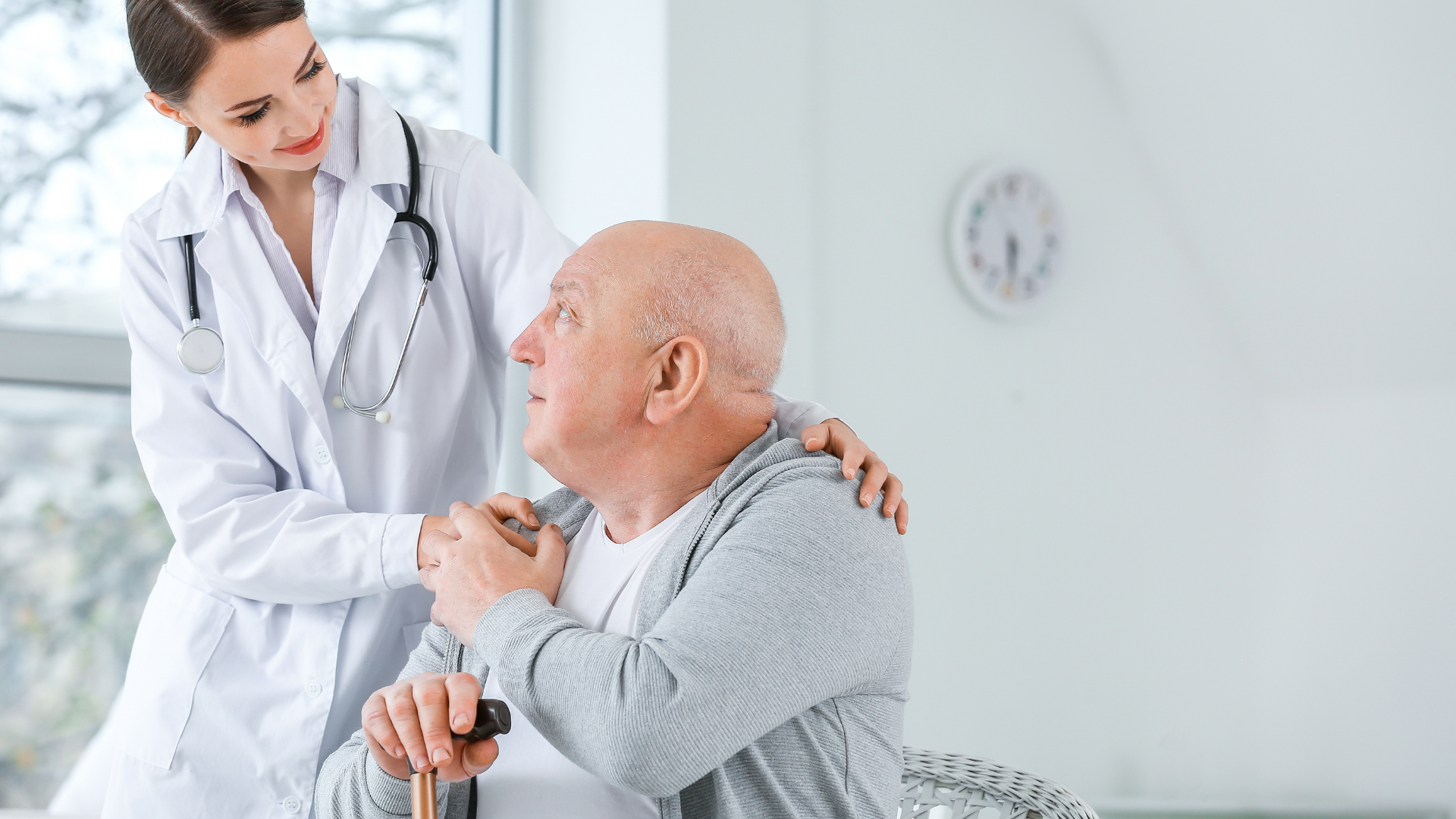
Parkinson's disease is the second most common neurodegenerative disorder after Alzheimer's. Around 10 million people live with Parkinson's disease worldwide. People with this degenerative disease may have difficulty working, socializing, and even performing everyday tasks due to its profound effects.
This article will provide an overview of Parkinson's disease, including its causes, symptoms, treatment options, and exercise routines for patients.

What is Parkinson's Disease?
Parkinson's disease is a neurological disorder characterized by tremors, stiffness, and difficulty moving. It is a progressive disease, which means it typically becomes worse over time. Every year, about 60,000 Americans are diagnosed with Parkinson's disease, and nearly one million Americans suffer from it.
Causes of Parkinson’s Disease
The cause of Parkinson's disease is unknown, but a number of factors are believed to contribute to its development. Among them are:
Age: Most people who are diagnosed with Parkinson's disease are over the age of 60.
Family history: Having a family member who has Parkinson's disease increases the chances of developing the disorder as well.
Head injuries: Traumatic brain injuries increase the risk of Parkinson's disease.
Chemical exposure: Certain chemicals, such as pesticides and herbicides, can increase the risk of Parkinson's disease.
Symptoms of Parkinson's
The main symptoms of Parkinson's disease are:
- tremor or shaking, often when resting or tired. It usually begins in one arm or hand
- rigid or stiff muscle which can limit movement and cause pain
- slowing of movement, which can lead to periods of freezing (inability to get moving) and shuffled steps
- problems with posture and balance
Individuals with Parkinson's disease experience different symptoms, and the symptoms change over time as well. Some people also experience:
- fatigue
- impotence
- anxiety or depression
- difficulty swallowing
- loss of smell
- constipation
- lack of urinary control
- sleep disturbance
- loss of unconscious movements, such as blinking and smiling
- difficulties with handwriting
- changes to speech, such as soft, quick or slurred speech
- drop in blood pressure leading to dizziness
The early signs of Parkinson's disease may not be recognized. Your body may try to tell you about the movement disorder many years before movement difficulties start with these warning signs.

How Parkinson's Disease is Diagnosed?
You will likely need a physical and neurological examination to determine if there are any changes in your reflexes, coordination, strength, or mental functioning. Additionally, your doctor might also see how you respond to medicine.
If your symptoms are continuing and you have not found a solution, you might need some tests to figure out what is wrong. This could include MRI and CT scans as well as some other types of scans. Blood tests might also be necessary to exclude other illnesses.

Parkinson’s Disease Treatment
There is no cure for Parkinson's disease, but there are treatments available that can help control symptoms. If you or someone you know has been diagnosed with Parkinson's disease, it is important to learn as much as you can about the condition and how to manage it.
Medicine - There are many different types of medication that can help, and the most effective one is Carbidopa/Levodopa. Treatment is highly individualized and adjusted over time based on symptoms and side effects.
Surgery - Deep brain stimulation surgery can be used for some people to reduce the amount of medicine they need. It can reduce the tremor, or lessen wriggling movements in the body.
Healthy Lifestyle - If you have Parkinson's disease, you may find it helpful to make some changes to your lifestyle and physical environment. Eating a high-fiber diet of fruit, vegetables, and grains, and drinking plenty of water can help prevent constipation.
Physical, occupational and speech therapy - Physical therapy can help improve your walking and get you started on the right exercise routine. Occupational therapy can help you use your fine motor skills as best as possible. Speech therapy can help with any speech or language problems that may arise because of Parkinson's disease.
Exercise - Exercising regularly may help you increase your muscle strength and balance. It can also help reduce depression and anxiety. If you have problems such as freezing of movement or loss of balance, a physiotherapist can give you advice on an exercise program that can help.
Guide to Parkinson's Exercise Routines
The importance of exercise cannot be overstated, particularly for those living with Parkinson's disease. Studies have shown that exercise delays the progression of the disease, improves mood, reduces depression, and improves balance and coordination. Parkinson's patients can benefit from a variety of exercises, so it's important to find an activity you enjoy and can stick with for a long time.
We want you to be successful as you embark on your fitness journey. So here are a few things to keep in mind before you begin your exercise program.
- First, don't overdo it. Creating reasonable and achievable goals is crucial when you're battling a chronic illness. Doing too much too soon can lead to burnout or injury.
- Make sure you work slowly up from exercises that require light to moderate effort (e.g., walking on a treadmill or gentle yoga) to more intensive training.
- Then, remember that, while tremors or other symptoms may worsen during exercise, staying active will alleviate them in the long run. However, that doesn’t mean you should “push through” if you feel pain. Always listen to your body, especially if you're exercising alone, and never be afraid to take breaks.
- Finally, consult with your physician and neurologist before embarking on any brand-new exercise regime. Depending on your needs, you may also want to find a physical therapist, preferably one with expertise in Parkinson's.
Parkinson's Disease Exercise Routines
With these warnings out the way, there are some other things you want to look for when creating an exercise regime. Make sure whatever form of exercise you choose addresses the four core components of a holistic exercise routine.
Aerobics
This is any exercise that gets your heart pumping. Examples of exercises that get your heart pumping include aerobic activities such as running, swimming, and playing tennis. It’s important because Parkinson's can affect cardiovascular conditioning.
Balance
Better balance means fewer falls. For people with Parkinson's Disease, this is so helpful. The practice of improving their balance allows them to live a functional independent life.
As Parkinson's heavily impacts motor control, balance training is essential for counteracting any ill effects. Balance boards can help with that.
Strength
Loss of muscle mass can severely impact the ability to perform even actions as simple as sitting or walking, so it’s essential to incorporate weights or body weight into the practice. Not only do they help build strength, but also improve endurance.
Stretching
This is especially important combined with strength training since your muscles need to be stretched as they grow stronger. By stretching before and after your workout, you can help prevent injuries and improve your range of motion.
Safety Measures When Using A Balance Board
A balance board can serve a variety of purposes, including balance training and physical therapy. However, if the board is not used properly, it can also be dangerous. There are some basic safety precautions that you should take before using a balance board. Follow these simple safety guidelines to help you stay safe when using a balance board. First, make sure the board is on a level surface and that there is nothing nearby that could cause you to fall. Second, start slowly and gradually increase the difficulty of your balance exercises. Always use the balance board with another person nearby in case you lose your balance and need help getting back up. Last but not least, listen to your body. If you feel dizzy or lightheaded, stop.
How can Parkinson's affect mental health and what can be done to mitigate it?
The cognitive changes that come with Parkinson's can make it hard to process information and make decisions. This can be very frustrating for patients and their loved ones, as it can make everyday tasks much more difficult. Additionally, Parkinson's patients can feel isolated and lonely due to the physical symptoms of the disease, making it hard for them to participate in activities that they once enjoyed.
Parkinson's can negatively impact mental health, but there are some things that can be done to ease the effect. People who are affected by the disease need support and understanding. Patients and their loved ones can also benefit from education about the condition as it helps them better comprehend what they are facing and how to cope with the challenges they face. Furthermore, patients can access a variety of resources to help them manage their symptoms and improve their quality of life. Counseling, support groups, and medication management are just a few examples.
Conclusion
Beginning an exercise routine can be daunting for anyone, especially people with chronic illnesses. However, a regular exercise routine can help stall Parkinson’s progression and improve day-to-day movements.
Start slow, and talk to your doctor about the best movements for your needs. Visit our library for more ideas on how to stay active and healthy.
